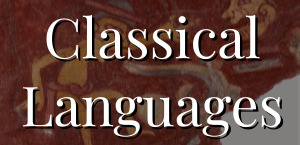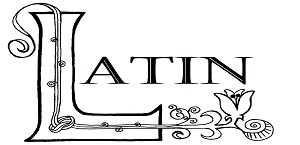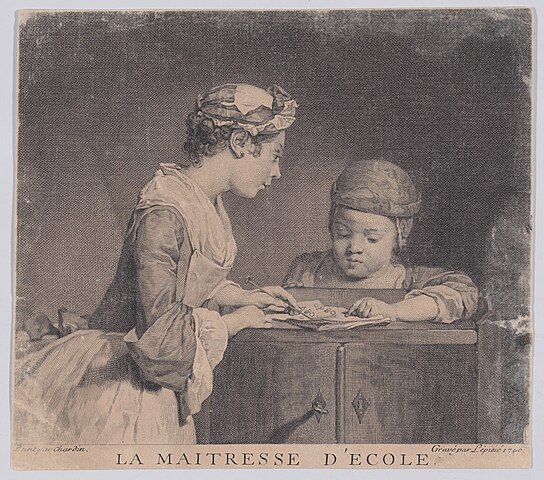

The study of Latin is a wonderful way to teach advanced grammar skills—the first leg of the mediaeval trivium. No less importantly, it opens up the student to the living language of the Church and Her vast library of contributing authors. Students begin to learn Latin grammar; review and reinforce English grammar; memorize prayers; complete basic translations and compositions.
- Teacher-Author: Bernadette Shields
- Teacher: Joshua Keatley

The study of Latin is a wonderful way to teach advanced grammar skills—the first leg of the mediaeval trivium. No less importantly, it opens up the student to the living language of the Church and Her vast library of contributing authors. Students cover the first 32 lessons of Benjamin D’Ooge’s Latin for Beginners; memorize 20 prayers; complete 20 translations and compositions.
Grammar includes the following:
Principles of Grammar; First and Second Declensions; Agreement of Adjectives; Possessive Adjective Pronouns; All Cases; The Nine Irregular Adjectives; The Demonstrative is, ea, id; Conjugation: Present, Imperfect, Future, Perfect, Pluperfect, and Future Perfect of sum, and 4 regular conjugations (active and passive); and more!
Translation assignments are available from all three time periods—ancient, medieval, and modern—which will allow students to pick works that complement their Traditio Nostra readings.
- Teacher: Joshua Keatley
- Teacher: Alecia Rolling

Continuing the pursuit of grammatical excellence and Catholic literacy, the students cover lessons 33 through 69 of Benjamin D’Ooge’s Latin for Beginners. And again cover twenty prayers, translations, and compositions.
Grammar includes the following:
Passive Perfect, Pluperfect, and Future Perfect; Yes-or-no Questions; Accusative Subject of an Infinitive; The Relative and Interrogative Pronoun; Third-Fifth Declensions; Expressions of Place; Ablative of Time; Pronouns: Personal and Reflexive; The Intensive Pronoun Ipse; The Demonstrative Pronoun idem; The Demonstratives hic, iste, ille; The Indefinite Pronouns; Comparison of Adjectives; Deponent Verbs; The Subjunctive Mood; Inflection of the Present, Imperfect, Perfect, Future Perfect Subjunctive; The Subjunctive of Purpose, Result, and Characteristic; Substantive Clauses of Purpose; Verbs of Fearing; The Participles; Ablative Absolute; and more!
Translation assignments are available from all three time periods—ancient, medieval, and modern—which will allow students to pick works that complement their Traditio Nostra readings.
- Teacher: Alecia Rolling

Many report that the completion of this three year cycle is often the equivalent to more than three years of study in the average high school program. By the second semester, students are doing topical readings on a range of subjects—in Latin! We cover lesson 70 through the end of Benjamin D’Ooge’s Latin for Beginners, finishing grammar by the end of the first semester.
Grammar includes the following:
Construction with cum; Ablative of Specification; Gerund and Gerundive; Predicate Genitive; Indirect Statements; Dative with Compounds; Subjunctive in Indirect Questions; Dative of Purpose or End for Which; Genitive and Ablative of Quality or Description; and more!
Students then transition away from memorization and into actual reading of long texts. Readings in the second semester include, but are not limited to: sacred music and art, vocations, education, work, and family life from such authors as Julius Caesar, Cicero, Ovid, and Augustine.
- Teacher: Joshua Keatley
- Teacher: Alecia Rolling

- Teacher: Matthew Walsh